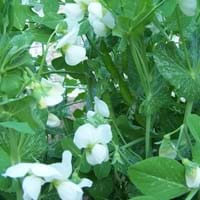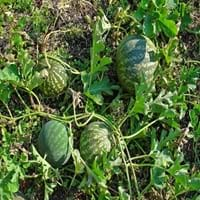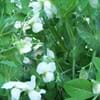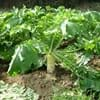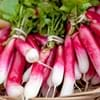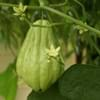Origin
Mediterranean
Hybrid origin, Africa, Southern Africa
Types
cowpea , pigeon pea
Not Available
Number of Varieties
Not Available
Habitat
Fields, Loamy soils
along watercourse, Grassland
USDA Hardiness Zone
Not Available
10-12
Sunset Zone
A1, A2, A3, H1, H2, 1a, 1b, 2a, 2b, 3a, 3b, 4, 5, 6, 7, 8, 9, 10, 11, 12, 13, 14, 15, 16, 17, 18, 19, 20, 21, 22, 23, 24
A3, H1, H2, 1a, 1b, 2a, 2b, 3a, 3b, 4, 5, 6, 7, 8, 9, 10, 11, 12, 13, 14, 15, 16, 17, 18, 19, 20, 21, 22, 23, 24
Habit
Vining/Climbing
Prostrate/Trailing
Minimum Width
Not Available
Flower Color
White, Pink, Lavender
Yellow
Flower Color Modifier
Bicolor
Bicolor
Fruit Color
Green
Green, Crimson, Dark Green
Leaf Color in Spring
Green, Sea Green, Gray Green
Light Green
Leaf Color in Summer
Not Available
Green, Gray Green
Leaf Color in Fall
Green, Blue Green, Gray Green
Green, Gray Green
Leaf Color in Winter
Green, Blue Green, Gray Green
Not Available
Leaf Shape
Egg-shaped
Irregular
Plant Season
Spring, Fall, Winter
Summer, Fall
Sunlight
Full Sun, Partial Sun
Full Sun
Growth Rate
Fast
Very Fast
Type of Soil
Clay, Loam, Sand
Loam
The pH of Soil
Neutral
Neutral
Soil Drainage
Well drained
Well drained
Bloom Time
Early Spring, Spring, Late Spring, Fall, Late Fall, Early Winter, Winter, Late Winter
Indeterminate
Tolerances
Variety of soil types
Drought
Where to Plant?
Ground
Container, Ground
How to Plant?
Seedlings
Seedlings, Transplanting
Plant Maintenance
Medium
High
Watering Requirements
Do not let dry out between waterings, Needs watering once a week
Requires consistently moist soil, Requires regular watering, Requires watering in the growing season, Water Deeply
In Summer
Consistently
Lots of watering
In Spring
Adequately
Moderate
In Winter
Less Watering
Average Water
Soil pH
Slightly Acidic
Neutral
Soil Type
Clay, Loam, Sand
Loam
Soil Drainage Capacity
Well drained
Well drained
Sun Exposure
Full Sun, Partial Sun
Full Sun
Pruning
No pruning needed, Remove damaged leaves, Remove dead branches, Remove dead leaves
Remove damaged leaves, Remove dead leaves, Remove dead or diseased plant parts
Fertilizers
All-Purpose Liquid Fertilizer, Compost
fertilize in growing season, Nitrogen, Potassium
Pests and Diseases
Aphids, Leaf curl, Powdery mildew, Red blotch, Root rot
brown-spot needle blight, Cutworms, Downy mildew, Flea beetle, Flea Beetles, Fungal Diseases, fungus, Fusarium wilt, Powdery mildew, Red blotch
Plant Tolerance
Light Frost
Drought, Salt
Flower Petal Number
Single
Single
Foliage Texture
Medium
Coarse
Foliage Sheen
Matte
Matte
Attracts
Not Available
Bees, Insects, Squirrels
Allergy
Diarrhea, Intestinal gas
Stomach pain, Throat itching
Aesthetic Uses
Not Used For Aesthetic Purpose
Ground Cover
Beauty Benefits
For treating wrinkles
Not Available
Environmental Uses
Food for animals
Air purification, Food for animals, Food for birds, Food for insects, Versatility
Medicinal Uses
No Medicinal Use
High blood pressure, Nutrients
Part of Plant Used
Leaves, Seeds
Fruits
Other Uses
Cosmetics, Making Shampoo, Used as a nutritious food item, Used As Food
Used As Food, Used for its medicinal properties, Used in making beverages
Used As Indoor Plant
No
No
Used As Outdoor Plant
Yes
Yes
Garden Design
Container, Edible, Herb, Vegetable, Vine
Edible, Fruit / Fruit Tree, Herb / Vegetable, Tropical, Vine
Botanical Name
PISUM sativum
CITRULLUS lanatus 'Crimson Sweet'
Common Name
Garden Pea
Crimson Sweet Watermelon, Watermelon
In German
Erbse
Wassermelone
In French
Erbse
Citrullus lanatus
In Spanish
guisante
Citrullus lanatus
In Greek
μπιζέλι
καρπούζι
In Portuguese
ervilha
Citrullus lanatus
In Polish
groch
Citrullus lanatus
In Latin
pea
Citrullus lanatus
Phylum
Magnoliophyta
Embryophyta
Class
Magnoliopsida
Magnoliopsida
Order
Fabales
Cucurbitales
Family
Fabaceae
Cucurbitaceae
Clade
Dicotyledonous
Angiosperms, Eudicots, Rosids
Tribe
Not Available
Benincaseae
Subfamily
Not Available
Cucurbitoideae
Number of Species
Not Available
Importance of Garden Pea and Citrullus Lanatus
Want to have the most appropriate plant for your garden? You might want to know the importance of Garden Pea and Citrullus Lanatus. Basically, these two plants vary in many aspects. Compare Garden Pea and Citrullus Lanatus as they differ in many characteristics such as their life, care, benefits, facts, etc. Every gardener must at least have the slightest clue about the plants he wants to plant in his garden. Compare their benefits, which differ in many ways like facts and uses. The medicinal use of Garden Pea is No Medicinal Use whereas of Citrullus Lanatus is High blood pressure and Nutrients. Garden Pea has beauty benefits as follows: For treating wrinkles while Citrullus Lanatus has beauty benefits as follows: For treating wrinkles.
Compare Facts of Garden Pea vs Citrullus Lanatus
How to choose the best garden plant for your garden depending upon its facts? Here garden plant comparison will help you to solve this query. Compare the facts of Garden Pea vs Citrullus Lanatus and know which one to choose. As garden plants have benefits and other uses, allergy is also a major drawback of plants for some people. Allergic reactions of Garden Pea are Diarrhea and Intestinal gas whereas of Citrullus Lanatus have Stomach pain and Throat itching respectively. Having a fruit bearing plant in your garden can be a plus point of your garden. Garden Pea has showy fruits and Citrullus Lanatus has showy fruits. Also Garden Pea is not flowering and Citrullus Lanatus is not flowering . You can compare Garden Pea and Citrullus Lanatus facts and facts of other plants too.
